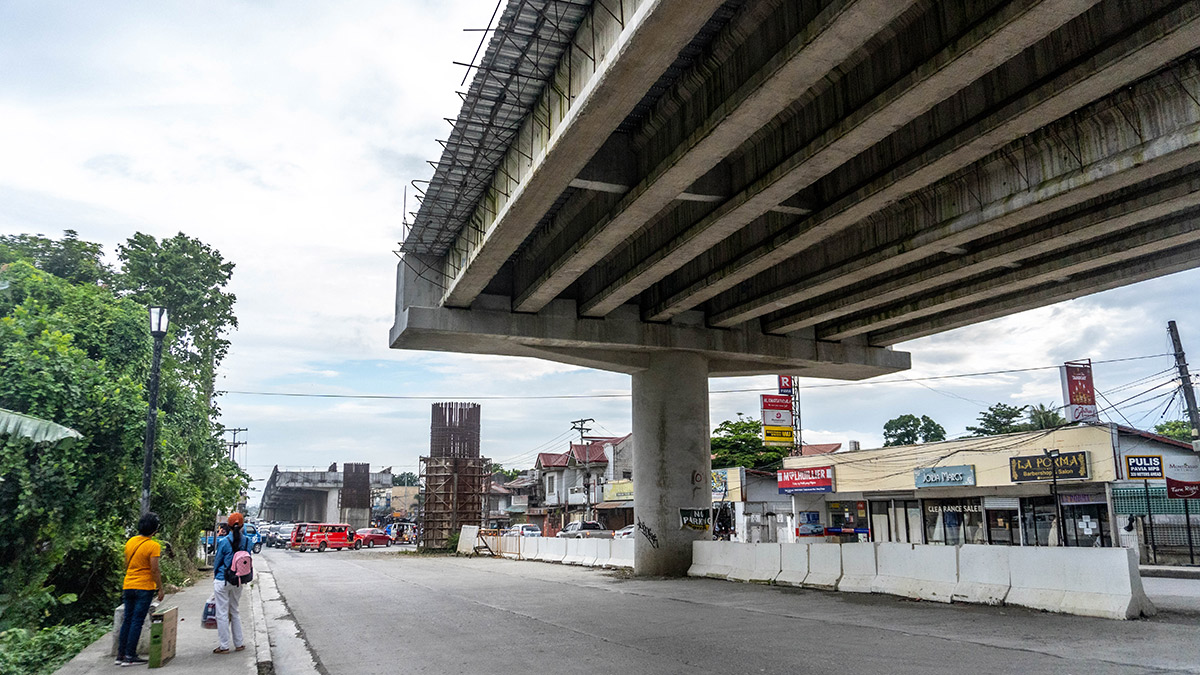Before Iloilo flyover work resumes, DPWH-6 wants 3rd-party probe

EYESORE This unfinished P802-million Aganan Flyover in Pavia, Iloilo, shown in this April 11, 2023 photo, is considered an eyesore by local residents. Its construction was halted by the Department of PublicWorks and Highways in 2022 amid concerns over structural safety. IAN PAUL CORDERO
ILOILO CITY, Philippines — The Department of Public Works and Highways in Western Visayas (DPWH-6) would not resume construction work on a controversial flyover in Iloilo province’s Pavia town until its central office grants its request for a third-party investigation.
The DPWH-6 officials led by regional director Sanny Boy Oropel made this announcement when they appeared before the Pavia municipal council on May 6 to provide updates on the Aganan Flyover, where work had been stalled since April 5, 2023 due to safety and stability issues that have been hounding the adjoining Ungka Flyover, built at the town’s boundary with Iloilo City.
READ: Soil test bares design flaws in another flyover in Iloilo
Oropel said concerns regarding the Ungka Flyover had prompted his predecessor, now Public Works and Highways Assistant Secretary Nerie Bueno, to stop works on the Aganan.
“The Aganan Flyover is located along the same alignment with a very short distance from the Ungka Flyover, and the result of the Ungka Flyover [probe] might also affect the construction of the Aganan Flyover,” Oropel explained.
READ: DPWH halts another Iloilo flyover project
The P680-million Ungka flyover was opened to the public in June 2022 but was closed in September of the same year after public complaints over the “wavy feel” while driving over it, as well as reports that it was “sinking” and images on social media of flooding at the top of the flyover during rainy days.
The construction of the 436.90-meter Aganan flyover, with a budget of P802 million, began in 2020 but was halted when safety issues involving the Ungka flyover erupted. The Ungka flyover has been partially opened since late 2023 but the Aganan flyover has yet to be finished.
Inconsistencies
Oropel said they have a pending request at the DPWH central office for a P10-million to P15-million budget for a third-party investigation into the Aganan Flyover’s structural issues.
The regional office had previously conducted confirmatory and seismic testing of the flyover area’s soil, which showed that the necessary depth to reach stable soil was actually 43.50 meters, higher than the 28.50 meters provided in the structural design provided by United Technologies Consolidated Partnership (UTCP), the firm hired by the DPWH Bureau of Design.
Oropel said the inconsistency between their soil test result and UTCP’s initial testing raised suspicions that the firm was using data different from that of DPWH-6, which would require a third-party intervention.
“The main reason we requested for [further] study on the soil is for us to be very careful to continue our work or wait for the third-party consultant to determine who is correct … Until such time that we can release the facts, I am very sorry to inform this body that we cannot continue or resume activities at the Aganan Flyover,” he said.